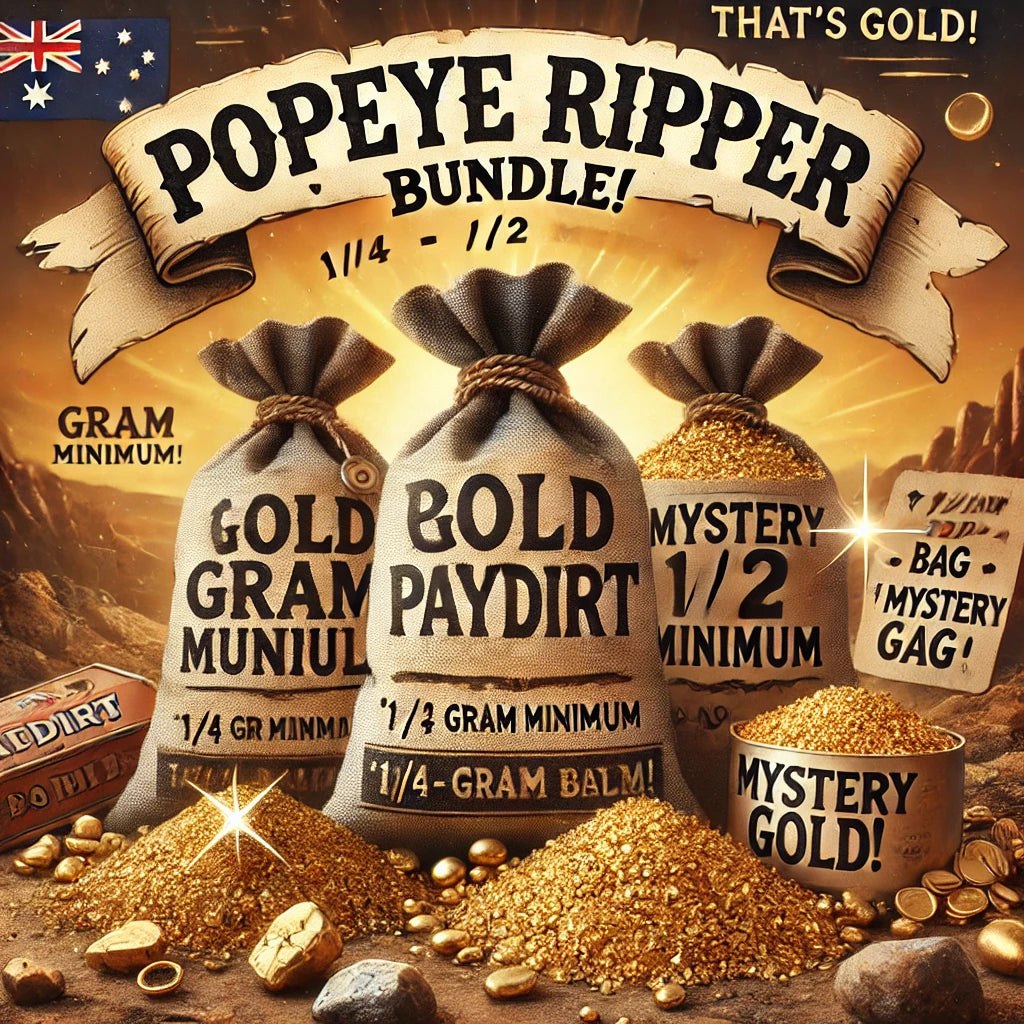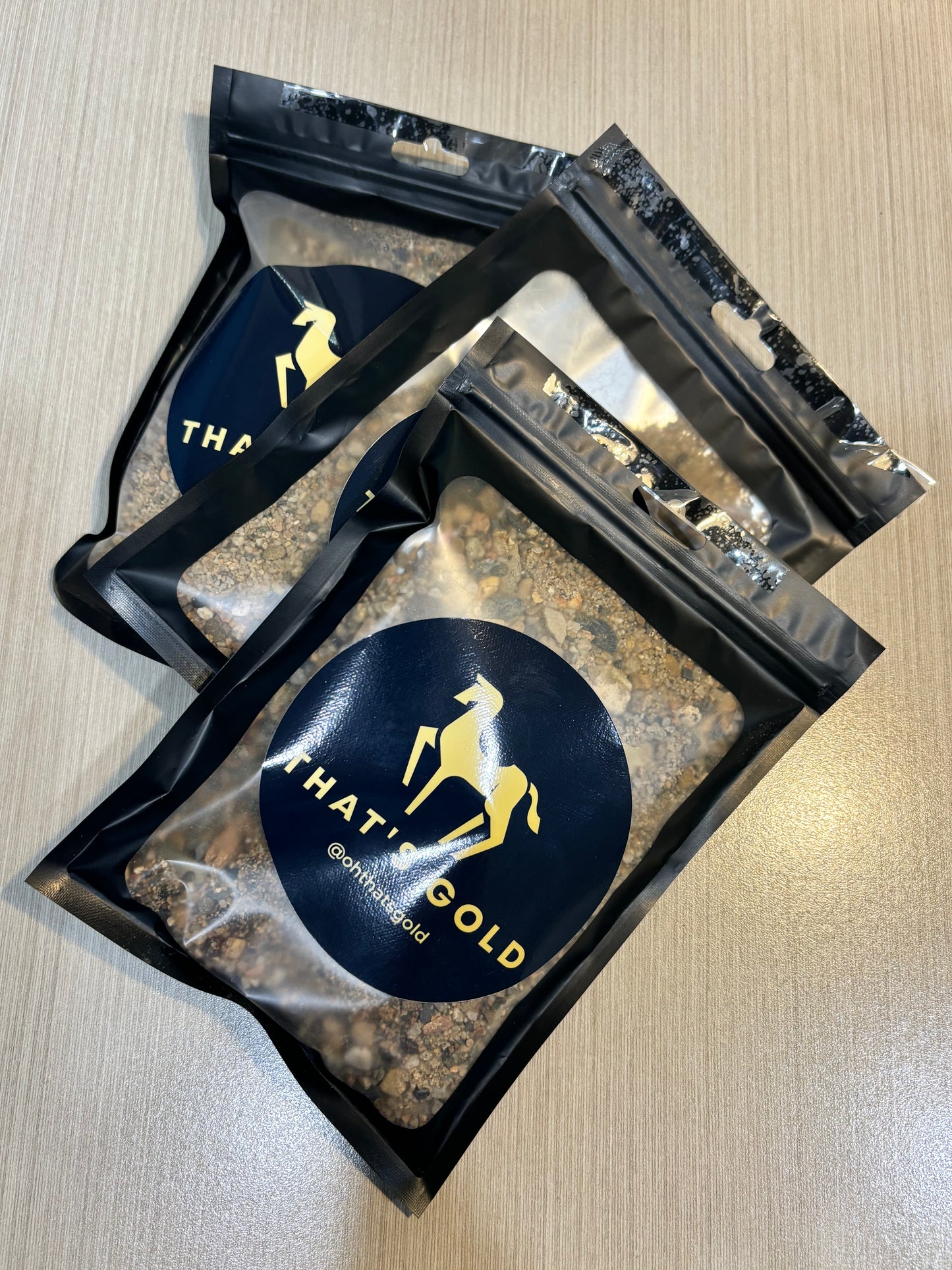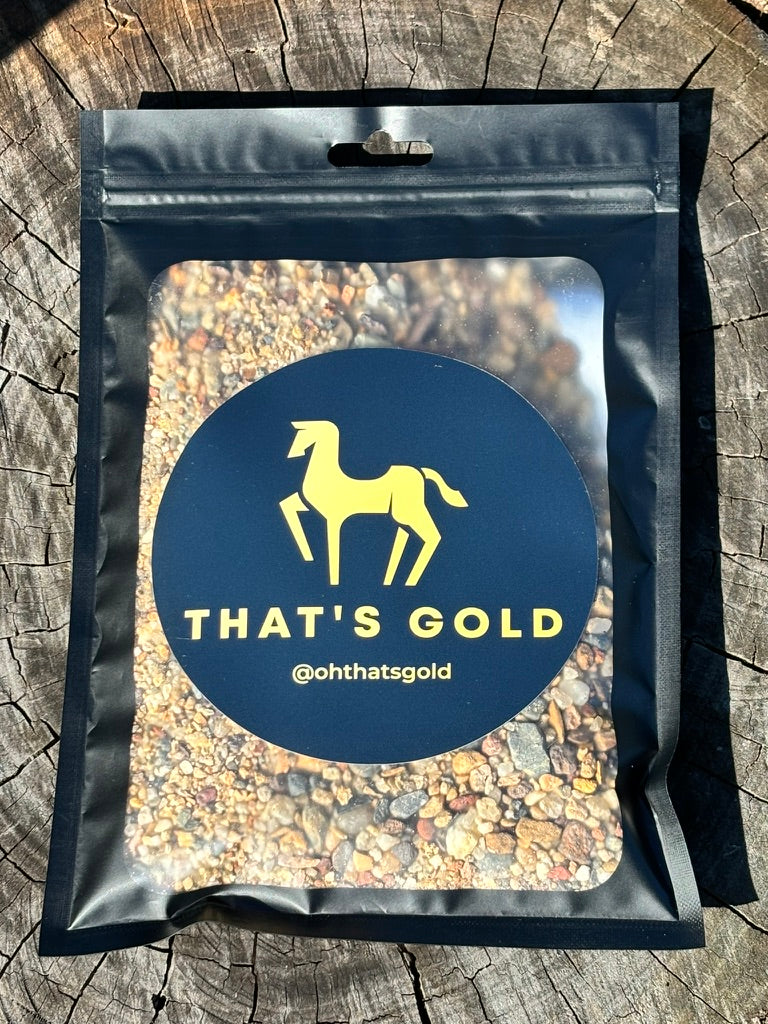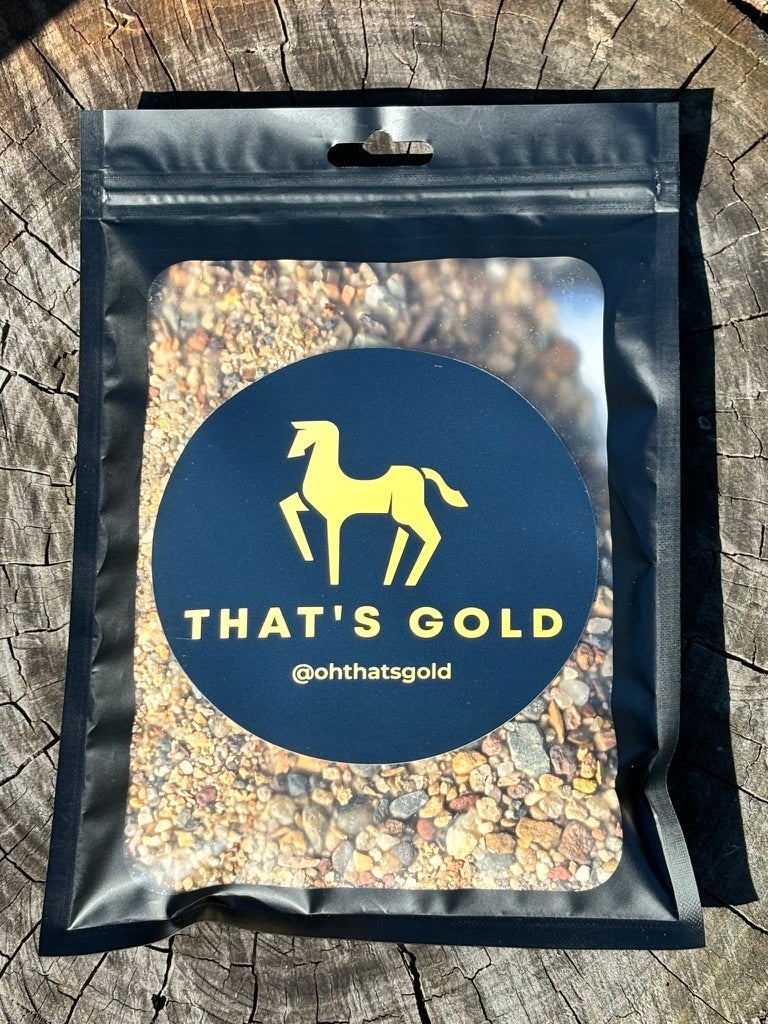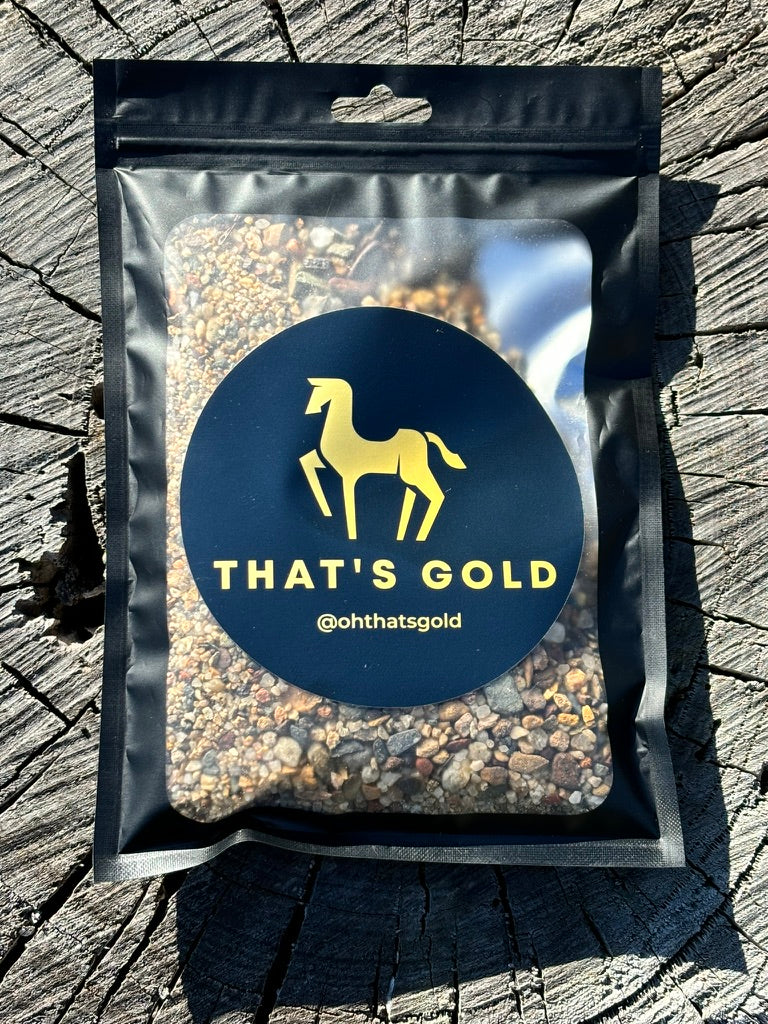Buying paydirt can be an exciting way to explore the world of prospecting and gold recovery. For those looking to strike it rich, purchasing paydirt offers a tangible opportunity to find valuable metals right from the comfort of home. Many people are discovering the thrill of sifting through paydirt to uncover what hidden treasures await them.

As interest grows, it’s essential to understand what to look for when buying paydirt. From assessing quality to knowing what legal considerations may apply, making informed decisions can enhance the paydirt experience. This ensures that buyers can maximise their chances of success while minimising potential pitfalls.
Whether for hobbyists or serious prospectors, understanding the ins and outs of paydirt can lead to rewarding findings. Taking the plunge into this fascinating pursuit may open up a new adventure for many.
Key Takeaways
- Paydirt provides a chance to uncover valuable metals.
- Quality and legal aspects are important when purchasing.
- Proper techniques can maximise the value found in paydirt.
Understanding Paydirt
Paydirt is a term that refers to soil or gravel that contains valuable minerals, often gold. Buyers seek paydirt for the chance to pan or sluice it for precious metals. The following sections clarify what paydirt is and where it comes from.
Definition and Composition
Paydirt consists mainly of dirt, gravel, and sometimes sand that has been mixed with gold-bearing materials. The composition can vary depending on the source, but common elements found in paydirt include small nuggets of gold, flakes, and other minerals. The quality of paydirt is determined by its mineral content.
Typical components of paydirt:
- Gold particles: Ranging from tiny flakes to larger nuggets.
- Black sand: Often contains iron and other minerals.
- Quartz: Frequently found in gold-bearing areas.
Buyers should know that not all paydirt is equal. Quality can depend on factors like the location it comes from and the methods used to extract the soil.
Sources of Paydirt
Paydirt is sourced from various locations known for gold deposits. Some common sources include riverbeds, abandoned mines, and areas around gold rush sites. Each source can yield different results in terms of gold content.
Key sources of paydirt include:
- Riverbeds: Water erosion often exposes gold from upstream deposits.
- Gold mines: These sites are often rich in various minerals and gold.
- Prospecting areas: Locations where gold has been found historically.
Buyers might want to consider where their paydirt comes from to assess its potential value. Different mining methods can also impact what is present in the paydirt.
Benefits of Buying Paydirt

Buying paydirt offers a range of advantages for both inexperienced and seasoned prospectors. It provides practical experience, educational opportunities, and serves as an enjoyable recreational activity.
Prospecting and Gold Panning
Purchasing paydirt can be an exciting introduction to the world of gold prospecting. It allows individuals to gain hands-on experience with gold panning techniques. Many paydirt packages contain real gold, giving buyers the chance to find valuable minerals.
This experience can help enthusiasts learn how to carefully sift through material, identify gold, and use basic tools. By practicing these skills, beginners can build their confidence and knowledge.
As they progress, they can explore more advanced prospecting methods. Ultimately, this practical experience can lead to greater successes when searching for gold in natural environments.
Educational Value
Buying paydirt is not just about finding gold; it also provides educational value. It allows users to explore geology and the processes that lead to gold formation. Through the activity, individuals learn about different types of minerals and their characteristics.
Many paydirt packages come with information that explains the contents and the area it was sourced from. This background knowledge can enhance a buyer's experience and interest in geology.
Moreover, individuals can share their findings and techniques with friends or family. This fosters a community of learning and can inspire others to take up gold panning as a hobby.
Recreational Uses
Gold panning with paydirt is a fun and rewarding recreational activity. It can be enjoyed alone or with friends and family, making it a great way to spend time outside. Many people find the thrill of discovering gold to be a unique and satisfying experience.
Participants often find themselves relaxing and unwinding as they engage in the activity. It offers a break from daily routines and allows for appreciation of nature.
Additionally, for those wanting to turn their hobby into something productive, buying paydirt can lead to potential monetary gains. Finding gold can be exciting and may incentivise continued engagement with the hobby.
Assessing Quality and Purity

When considering paydirt, quality and purity are vital. This section looks into common impurities found in paydirt and the methods used to assess its value.
Common Impurities in Paydirt
Paydirt can contain various impurities that affect its quality. Common impurities include:
- Clay and Silt: These can easily mix with gold, making it harder to retrieve.
- Iron Compounds: Such as hematite or magnetite, they can interfere with gold recovery.
- Fines: Small particles may be present, which can complicate processing.
- Organic Materials: Leaves, roots, and other organic matter can reduce the overall value.
Identifying these impurities is crucial for evaluating paydirt. A sample clean of these elements usually indicates higher quality and gold recovery potential.
Techniques for Valuation
To assess paydirt's value, several techniques can be employed.
- Pan Testing: This involves using a pan to wash the paydirt and separate gold from impurities.
- Sluicing: A sluice box can be used for larger amounts of paydirt, allowing for efficient separation.
- Chemical Testing: Some may use chemicals to test for the presence of gold and other metals.
- Microscopic Analysis: Observing the particles under a microscope can help identify gold presence and purity.
Each of these techniques provides insight into the quality and potential yield of the paydirt. By utilizing these methods, one can make informed decisions when purchasing paydirt, ensuring a better investment.
Purchase Considerations
When buying paydirt, it's important to look at several factors. Knowing the vendor's reputation, the origin of the paydirt, and analysing the price can help make a well-informed decision.
Vendor Reputation
Check the reputation of the vendor before making a purchase. Look for reviews and ratings from previous customers. Websites and forums often have feedback on vendors. A trusted vendor should be well-known in the mining community.
It's also wise to see if the vendor offers any guarantees on their paydirt. A satisfaction guarantee can provide peace of mind. Be cautious of vendors with poor ratings or unclear return policies. Engaging with reputable sellers is crucial for a successful buying experience.
Paydirt Origin
Understanding where the paydirt comes from is essential. Different locations can yield different results. Paydirt from known gold-producing areas often has higher value. Researching the source can give insights into the quality of the product.
Ask the vendor about how the paydirt was sourced. Was it from a riverbed, mine, or a claim? Each method can impact the richness of the paydirt. Knowing the origin helps set expectations regarding potential finds.
Price Analysis
Price is an important aspect to consider when buying paydirt. It’s essential to compare prices from different vendors to find fair value. Sometimes, high prices can indicate quality, but that’s not always the case.
Breakdown the price per gram of gold or other valuable materials when possible. This can help see if a product is worth the investment. Be wary of extremely low prices; they may signal low-quality paydirt. Always balance price with the other factors, like vendor reputation and origin, for the best choice.
Processing and Extracting Value
Processing paydirt requires specific equipment and a careful approach. Proper techniques can significantly improve extraction results. Here are the essential details.
Equipment and Tools Required
For successful processing, certain tools are needed. Below is a list of the main equipment:
- Gold Pan: Essential for washing paydirt and separating gold from other materials.
- Sluice Box: Useful for processing larger amounts of paydirt. It helps in enhancing gold recovery.
- Classifier: This tool sorts materials by size. It ensures effective separation of gold particles.
- Water Supply: A constant source of water is critical for washing and processing.
- Shovel and Trowel: Basic tools for digging and moving paydirt.
Investing in quality equipment can yield better results. Each piece of equipment plays a vital role in maximising extraction efficiency.
Step-by-Step Processing Guide
-
Prepare Your Work Area: Clear a space where you can work safely and effectively. Have all tools nearby.
-
Classify the Paydirt: Use the classifier to sift the paydirt by size. This step increases the chance of finding gold.
-
Wash the Paydirt: Using the gold pan, add water and mix in small amounts of paydirt. Gently shake to allow gold to settle at the bottom while lighter materials wash away.
-
Use the Sluice Box: For larger volumes, feed the classified material into the sluice box. Ensure a steady flow of water to help separate gold from debris.
-
Collect and Examine: After processing, collect the materials from the pan or sluice. Carefully examine them for gold particles.
Following these steps will enhance the chances of extracting valuable material from paydirt. Proper technique and equipment are crucial for effective results.
Legalities and Regulations

Understanding the legal aspects of buying paydirt is crucial for potential buyers. Ownership rights and environmental considerations play significant roles in this field.
Ownership Rights
Ownership rights vary by region and often depend on land use laws. When purchasing paydirt, buyers must ensure they have clear rights to the material. This includes checking if the seller has legal authority to sell the paydirt.
It is essential to consider whether the land where the paydirt was sourced has mining rights designated. Buyers should review any legal documents related to the property. This can include titles and permits.
Failing to do proper research could lead to disputes later on. Proper documentation protects buyers from potential legal issues and ensures the purchase is valid.
Environmental Considerations
Mining and collecting paydirt can impact the environment. Buyers should be aware of regulations that protect local ecosystems. These rules often require permits for extraction activities.
In many regions, there are specific guidelines on how to collect paydirt without causing harm to surroundings. Ignoring these rules may result in fines or legal actions against the buyer.
Sustainable practices are increasingly important in this industry. Buyers should look for sellers who ensure their paydirt is sourced responsibly. By prioritising environmental health, buyers can contribute to the longevity of mining activities.
Storing and Displaying Findings

Proper storage and display of findings is important for preservation and enjoyment. It ensures the longevity of valuable items like gold nuggets while allowing for an engaging display at home or in a collection.
Proper Storage Solutions
Storing findings correctly can prevent damage and loss. Use containers that keep moisture and air out.
Recommended storage options include:
- Acid-free boxes: These protect against chemical reactions that can tarnish gold.
- Jewellery pouches: Soft fabric pouches prevent scratches and scuffs.
- Display cases: Glass display cases keep items visible while protecting them from dust and handling.
Place items in stable, dry locations. Avoid direct sunlight, which can fade colours and cause materials to deteriorate. For longer-term storage, consider using silica gel packets to absorb moisture.
Display Ideas for Gold Nuggets
Displaying gold nuggets can turn a simple collection into a stunning showcase. Choose a method that highlights the beauty of the nuggets while keeping them safe.
Display options include:
- Shadow boxes: These allow for artistic arrangements while protecting items.
- Glass domes: Perfect for showcasing individual pieces, adding elegance.
- Wall-mounted displays: Create custom frames that allow for easy viewing.
Arrange nuggets attractively. Group similar sizes or colours, and consider using stands or easels for a dynamic display. Labeling each piece adds educational value and context to the collection.
Community and Resources
Connecting with a community and utilizing the right resources can enhance the experience of buying paydirt. These tools help individuals learn, share, and succeed in their pursuits.
Online Forums and Social Groups
Online forums and social groups serve as valuable platforms for enthusiasts to connect. In these spaces, individuals can share experiences, techniques, and outcomes of their paydirt purchases.
Popular Platforms:
- Facebook Groups
- Reddit Communities
- Dedicated Mining Forums
Members often post reviews, tips on where to buy, and advice on processing paydirt. Engaging with these communities allows newcomers to ask questions and seek guidance from seasoned pros.
Understanding the nuances of each provider can lead to better purchasing decisions, making online forums indispensable.
Literature and Guides
Literature and guides provide essential information for anyone interested in paydirt. Books, eBooks, and online articles cover aspects such as panning techniques and how to evaluate quality.
Recommended Reads:
- "Gold Panning Basics"
- "Finding Gold in Streams"
These resources offer not only the basics but also advanced strategies for successful gold recovery. Guides often include charts, illustrations, and tips for different types of paydirt.
Staying informed through literature helps buyers make educated choices, improving their overall experience. Engaging with these resources can lead to more rewarding outcomes in the world of paydirt.
Frequently Asked Questions
This section addresses common queries about purchasing and processing paydirt. It covers what to expect in a typical bag, how to choose reputable vendors, and the best ways to process gold at home.
What exactly is included in a typical bag of gold paydirt?
A standard bag of gold paydirt usually contains a mix of dirt, gravel, and small amounts of gold. It may also include other materials like black sands and gemstones. The amount of gold can vary, so it's important to check the vendor's claims.
How can you tell if paydirt from a particular vendor is worth purchasing?
Researching customer reviews is a good start. Look for vendors who provide clear descriptions of their product and some guarantee of gold content. Also, consider those who show sample results to prove their claims.
What are the best practices for processing and extracting gold from paydirt at home?
Using a simple panning method is effective for beginners. Start with a shallow pan and add water to separate lighter materials from heavier ones. You can also use a sluice box for larger amounts of paydirt, which helps streamline the process.
Are there any reputable sources for purchasing paydirt that contains genuine gemstones?
Yes, some vendors focus on paydirt that includes gemstones. Look for sources with a good reputation and positive feedback from customers. Checking for clear gemstone listings in their paydirt descriptions can also be helpful.
Can you buy paydirt in bulk for better value, and if so, from where?
Many vendors offer bulk purchasing options that lower the price per bag. It's wise to compare prices and check the gold content offered in larger quantities. Websites of well-known suppliers often provide these bulk purchasing deals.
What should you look for in paydirt to ensure it comes from ethical and sustainable sources?
Seek out vendors who are transparent about their sourcing methods. They should provide information on how the paydirt is collected and its environmental impact. Supporting businesses that follow ethical practices helps ensure sustainability in the industry.

